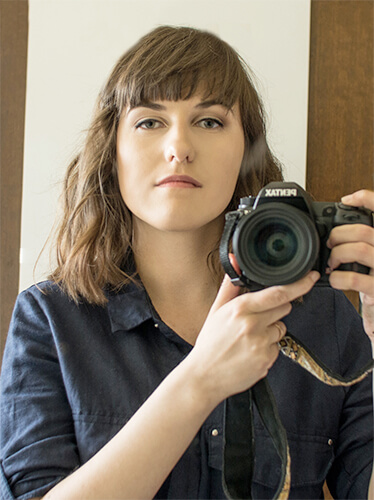Since my childhood I was attracted to visual arts, painting mostly. I had a dream to become a fashion costume designer when I grow up. When I was 14 things changed. I didn’t lose my passion for painting, but the camera my dad gave me drew me into photography. Since then I started taking self-portraits and gained some photography experience. Later I started reading books about photography and wasn’t taking any pictures for the time being. When I was 18 I bought my first digital camera and started taking pictures of nature. I became addicted to macrophotography, as the camera revealed worlds unseen by a naked eye.
When I graduated from school I studied, Technology of photography at Vilnius University of Applied Engineering Sciences, and obtained a Photo Journalist bachelor degree. In photography my most beloved avenues are portrait and dance photography, especially ballet.
Ballet for me is something above reality, something spiritual, fantastic. In photos I try to show ballet, the way I see and feel it. I try to create pictures which remind fairy tales or dreams, which look out of this world.
All about Sandra Tamos:AAP: When did you realize you wanted to be a photographer?Before graduating, as I remember. It's hard to say what led me to like it. it simply drew me. I never wanted to, but I suppose it was my destiny to become a photographer.
AAP: Where did you study photography?Vilnius College of Technologies and Design, Lithuania.
AAP:Do you have a mentor?No
AAP: How long have you been a photographer?Since my first shot, five years aproximately
AAP: Do you remember your first shot? What was it?The first digital photo was a dandelion fluff with water drops. However my absolutely first picture was self-portrait, photographed with old russian film camera, when I was 14.
AAP: What or who inspires you?Little bits of everything, I would have to write a book to metnion everything what inspires me, so I will save your time and will only mention few key sources of inspiration. Life, from germination/birth to blossom and so on. Water, in all forms. Fog, tiny drops on leaves or spider web, rain, ponds, rivers.
AAP: How could you describe your style?Sensual, mystical, darkly romantic.
AAP: What kind of gear do you use? Camera, lens, digital, film?I use Pentax K-5 digital camera, and my favorite lenes are SMC Pentax A 50 f/1,7 and Sigma 30 f/1,4.
AAP: Do you spend a lot of time editing your images?Yes, it takes skill and time to turn diamonds into brilliants, same with photos. But I enjoy the process so I dont mind if it takes time.
AAP: Favorite(s) photographer(s)?Too many to mention all of them. Lately especially admire Gregory Colbert creation.
AAP: What advice would you give a young photographer?Learn how to operate the camera perfectly, theres nothing worse than perfect moment slipping away, or when a moment that was felt right for a perfect picture, ends in dissapointment of failing to freeze it in camera, when it simply doesnt look the way it had to and the way it was perceived.
AAP: What mistake should a young photographer avoid?Loosing faith, should be avoided.
